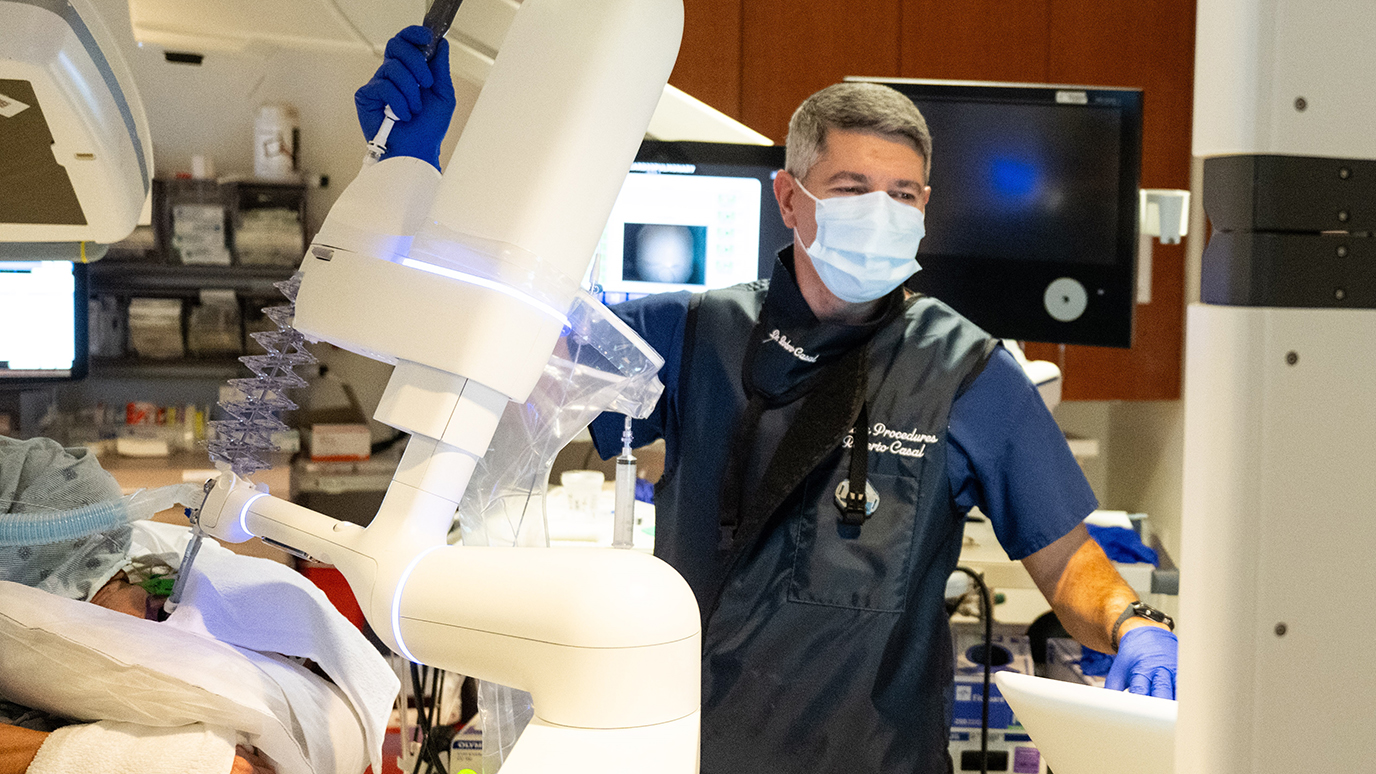- Diseases
- Acoustic Neuroma (14)
- Adrenal Gland Tumor (24)
- Anal Cancer (66)
- Anemia (2)
- Appendix Cancer (16)
- Bile Duct Cancer (28)
- Bladder Cancer (68)
- Brain Metastases (28)
- Brain Tumor (228)
- Breast Cancer (710)
- Breast Implant-Associated Anaplastic Large Cell Lymphoma (2)
- Cancer of Unknown Primary (4)
- Carcinoid Tumor (8)
- Cervical Cancer (154)
- Colon Cancer (164)
- Colorectal Cancer (108)
- Endocrine Tumor (4)
- Esophageal Cancer (42)
- Eye Cancer (36)
- Fallopian Tube Cancer (6)
- Germ Cell Tumor (4)
- Gestational Trophoblastic Disease (2)
- Head and Neck Cancer (4)
- Kidney Cancer (124)
- Leukemia (344)
- Liver Cancer (50)
- Lung Cancer (288)
- Lymphoma (284)
- Mesothelioma (14)
- Metastasis (30)
- Multiple Myeloma (98)
- Myelodysplastic Syndrome (60)
- Myeloproliferative Neoplasm (4)
- Neuroendocrine Tumors (16)
- Oral Cancer (98)
- Ovarian Cancer (172)
- Pancreatic Cancer (166)
- Parathyroid Disease (2)
- Penile Cancer (14)
- Pituitary Tumor (6)
- Prostate Cancer (144)
- Rectal Cancer (58)
- Renal Medullary Carcinoma (6)
- Salivary Gland Cancer (14)
- Sarcoma (234)
- Skin Cancer (294)
- Skull Base Tumors (54)
- Spinal Tumor (12)
- Stomach Cancer (60)
- Testicular Cancer (28)
- Throat Cancer (90)
- Thymoma (6)
- Thyroid Cancer (98)
- Tonsil Cancer (30)
- Uterine Cancer (78)
- Vaginal Cancer (14)
- Vulvar Cancer (18)
- Cancer Topic
- Adolescent and Young Adult Cancer Issues (20)
- Advance Care Planning (10)
- Biostatistics (2)
- Blood Donation (18)
- Bone Health (8)
- COVID-19 (362)
- Cancer Recurrence (120)
- Childhood Cancer Issues (120)
- Clinical Trials (620)
- Complementary Integrative Medicine (22)
- Cytogenetics (2)
- DNA Methylation (4)
- Diagnosis (224)
- Epigenetics (6)
- Fertility (62)
- Follow-up Guidelines (2)
- Health Disparities (14)
- Hereditary Cancer Syndromes (122)
- Immunology (18)
- Li-Fraumeni Syndrome (8)
- Mental Health (116)
- Molecular Diagnostics (8)
- Pain Management (64)
- Palliative Care (8)
- Pathology (10)
- Physical Therapy (18)
- Pregnancy (18)
- Prevention (876)
- Research (384)
- Second Opinion (74)
- Sexuality (16)
- Side Effects (596)
- Sleep Disorders (10)
- Stem Cell Transplantation Cellular Therapy (216)
- Support (404)
- Survivorship (324)
- Symptoms (182)
- Treatment (1762)
Should you get a central line for chemotherapy?
6 minute read | Published March 21, 2025
Medically Reviewed | Last reviewed by Jennifer Aceljado and Ivy Cocuzzi on March 21, 2025
Many cancer patients will receive chemotherapy infusions as a part of their cancer treatment.
Sometimes, it can be delivered safely through a standard (or “peripheral”) IV line. Other times, infusions must be administered through a central line catheter, such as a PICC, CVC or port.
But how do these options differ? Which one is right for you? We spoke with Clinical Outcomes Specialist Jennifer Aceljado and Advanced Practice Provider Manager Ivy Cocuzzi to learn more.
What are central lines used for?
Central lines can be used for:
- Fluid infusions when you’re dehydrated
- Nutrient infusions when you’re undernourished or just can’t eat
- Medication delivery when you’re sick
- Blood transfusions when your cell counts are low
Central lines are necessary because many of these substances are vesicants, or fluids that can severely irritate veins. Examples include antibiotics such as vancomycin, and “pressers” that help manage blood pressure in the ICU.
What are the differences between an IV, a port and a central line?
- A peripheral IV line (PIV, or just “IV”) is a short catheter typically placed in the forearm. It starts and ends in the arm itself.
- A PICC line is a longer catheter that’s placed in the upper arm. Its tip ends in the central portion of the largest vein of the body, which is why it’s considered a central line. PICC stands for "peripherally inserted central-line catheter.”
- A CVC is identical to a PICC line, except it’s placed in the chest or neck. CVC stands for “central venous catheter.”
- A port is a catheter that’s implanted surgically under the skin on the chest. It’s another type of central line.
Is a ‘midline’ considered a central line, too?
No. Or, at least, not at MD Anderson. Midlines end at axillary veins, which are located in the armpit, and we cannot use them for chemotherapy. So, we treat them as peripheral lines. We don’t place them unless people have vascular access issues.
Which one should I get?
It depends on the type of chemotherapy you need and the time required to administer it. It also depends on your lifestyle and medical history.
- A PIV can be left in place for up to four days and can only be used with certain types of chemotherapy -- specifically, those that don’t cause irritation or blistering, which can damage veins.
- A PICC line can be left in place for weeks or months but must be kept dry at all times -- even when you're showering. It also requires regular cleaning and maintenance to function well.
- A CVC can remain in place for weeks, months, or until treatment is complete. It must also be kept dry and regularly maintained.
- A port can stay in place for years. It requires only limited maintenance, which is performed by MD Anderson staff. And patients can shower — or even swim — with a port.
All central lines (PICC, CVC and port) can be used to deliver any type of chemotherapy.
Which patients should consider getting a port or a central line?
If you’ve had trouble getting regular IVs placed, you may want to consider having a port or other central line installed. As treatment progresses, it may become more and more difficult to place a PIV. So, it’s important to talk to your doctor about it before starting treatment.
You should also consider getting a port or other central line if you’ve had reactions to chemotherapy that was infused through a PIV. These reactions could include pain, redness or swelling at the IV site and/or streaking (redness/discoloration tracing along the vein).
When might a doctor recommend a port or central line?
If you need a continuous infusion of chemotherapy through a portable pump at home, you’ll need a central line. These types of infusions cannot be given through a PIV, due to the high risks of chemotherapy leaking into surrounding tissues and accidental dislodging.
Your doctors may also recommend one based on the state or accessibility of your veins. If you have small, weak or hard-to-find veins, or MD Anderson staff routinely have difficulty placing PIVs or drawing blood for lab work, you may need a central line or port before starting treatment.
What’s the most common objection patients have to getting a central line?
Most patients have concerns about care and maintenance. PICC lines and CVCs need gauze dressing changes between every 2 and 7 days, and flushing is recommended daily.
At MD Anderson, we have resources to help patients and caregivers learn how to do this. We offer classes on how to care for central lines. Patients also can visit one of two walk-in Vascular Access and Procedures Clinics (Main Building, Floor 8, Elevator C and Mays Clinic, Floor 8, Elevator U) for routine care and maintenance. And finally, home health care may be an option. Check with your MD Anderson case manager to see if your insurance policy covers it.
Since port placements require sedation and/or anesthesia in an operating room or procedural suite, some patients have concerns about having surgery. But central lines can sometimes be placed in the clinic using local anesthesia.
How long do patients typically have to use a port or a central line?
Most patients keep their PICC, CVC or port until they’re done with treatment, but it’s different for every person. Ports are often requested because they allow patients more normalcy in their daily lives and require less maintenance.
But ports are not always the best choice. If you need a central line only for a few days to a few weeks, a PICC line may be recommended, since it’s the easiest to place and remove.
How long can a central line stay in for?
Weeks to months, as long as you take care of it and keep it free of infection.
How long does it take for a patient to get a central line?
PICC lines and CVCs can usually be placed at MD Anderson’s Infusion Therapy Clinic within 24 to 48 hours of receiving an order from the physician.
An implanted port takes a little longer, as it’s considered a surgical procedure if done with general anesthesia. Those are only scheduled after you have a consultation with an oncologist, a surgeon or an interventional radiologist.
What do patients report as the hardest aspect of having a port or central line?
For PICCs and CVCs, care can sometimes be a challenge. You have to keep the dressing clean, dry and intact at all times. So, you have to cover it with plastic wrap and tape during showers, and you can’t take baths or go swimming.
Patients also complain about limitations to their activities. Exercising can be hard because external catheters sometimes catch on things.
We remind patients that there are still some activities they can do, such as walking or cycling. We also note that ports allow patients more freedom, so talk to your oncologist to see if you’d be a good candidate for one.
How should patients care for their ports and central lines?
CVCs and PICCs require weekly dressing changes and daily flushing for maintenance. Ports are flushed after each use and only require flushing once a month when they are not being used regularly. No dressing changes are required with a port.
What are the most common myths or misconceptions about ports and central lines?
There are two:
- Patients sometimes mention that they don’t want a port or central line because of the infection risk. While it’s true that there’s a risk of infection with any catheter, that risk can be decreased with proper care and maintenance. Mindful observation of the site will help catch any complications early on and produce better outcomes.
- Ports and central lines do not end with the tip of the catheter inside the heart. The tip of the catheter is located either in the superior vena cava (SVC) or at the atriocaval junction (ACJ), which is where that large central vein meets the heart.
What’s the one thing you wish patients knew about ports and central lines?
Ports and central lines are there to help you, and they are very safe ways of delivering chemotherapy.
Request an appointment at MD Anderson online, or by calling 1-877-317-1396.
Related Cancerwise Stories

Central lines can sometimes be placed in the clinic using local anesthesia.
Jennifer Aceljado
Clinical Outcomes Specialist





